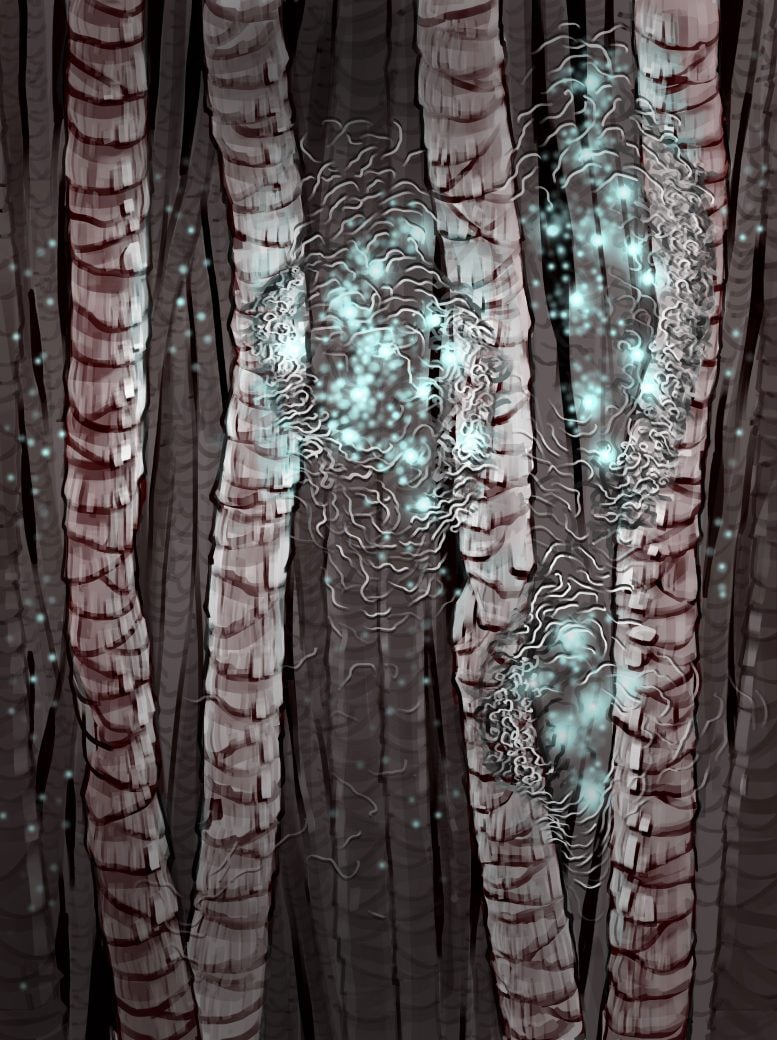
A new sustainable method has been developed to break down keratins, transforming leftover wool and feathers into useful products.
Every year, textile and meat-processing operations generate billions of tons of feathers, wool, and hair. These materials are rich in keratin, the tough, fibrous protein found in hair, skin, and nails.
Converting this animal waste into useful goods, from wound dressings and eco-friendly textiles to health extracts, could benefit the environment and help build new sustainable industries. The bottleneck is protein upcycling: breaking proteins into their components usually relies on corrosive chemicals used in large, polluting facilities, which keeps an affordable process out of reach.
Researchers at the Harvard John A. Paulson School of Engineering and Applied Sciences (SEAS) have identified fundamental chemistry that explains how proteins such as keratin de-nature in the presence of certain salt compounds. This insight could move protein recycling forward in a meaningful way.
A team led by Kit Parker, the Tarr Family Professor of Bioengineering and Applied Physics at SEAS, combined laboratory experiments with molecular simulations to clarify how salts trigger protein unfolding. They found that concentrated lithium bromide, a salt known to break apart keratin, acts in a surprising manner. Rather than binding directly to the proteins, as conventional wisdom suggested, it alters the structure of nearby water molecules, creating conditions that favor spontaneous unfolding.
This insight allowed the researchers to design a gentler, more sustainable keratin extraction process, separating the protein out of solution easily and without the need for harsh chemicals. The process can also be reversed with the same salt mixture, enabling recovery and reuse of lithium bromide denaturants.
The research is published in Nature Communications and is also featured in a Behind the Paper blog post.
Inspired by keratin biomaterials
First author Yichong Wang, a graduate student in chemistry who works in Parker’s group, said the research builds on the lab’s longstanding interest in developing keratin biomaterials with shape memory for biomedical applications. They had previously observed that keratin extracted from lithium bromide solvents can form thick, shapeable gels that readily separate from the surrounding solution and solidify almost immediately when placed back in water. While useful, they found the behavior odd, and they wanted to understand it better.
“We thought there might be a gap between current mechanistic understanding of how de-naturation works, and what we were seeing,” Wang said. “That’s when we got very interested in the mechanism itself to see if we could optimize our extraction procedures by explaining this phenomenon better.”
Molecular dynamics reveals shifts in surrounding water
To dig deeper, the team turned to the lab of Professor Eugene Shakhnovich in the Department of Chemistry and Chemical Biology, whose expertise is in protein biophysics. Molecular dynamics simulations led by co-author Junlang Liu allowed them to see that the lithium bromides were not working on the proteins at all, but rather, on the water around them.
It turns out lithium bromide ions cause water molecules to shift into two different populations – normal water, and water molecules that become trapped by the salt ions. As the normal water volume decreases, the proteins start to unfold due to the thermodynamic shift in the environment, rather than being directly ripped apart like in other de-naturation methods. “Making the water less like water, allows the protein to unfold itself,” Wang said. They had similar results by testing simpler proteins like fibronectin, pointing to a universal mechanism.
Better understanding and designing protein extraction methods that are less energy-intensive and less polluting than conventional ones opens potential avenues for protein-upcycling industries. In the Parker lab, using keratin as a substrate for tissue engineering is a major research thrust; having a reliable, sustainable method to extract and re-use such products would bolster their efforts.
What’s more, the process could lay a path for a whole new biomaterials industry, turning a massive waste stream like hair or chicken feathers into low-cost recycled materials, possibly as an alternative for traditional plastics, for example.
Reference: “Entropy-driven denaturation enables sustainable protein regeneration through rapid gel-solid transition” by Yichong Wang, Junlang Liu, Michael M. Peters, Ryoma Ishii, Dianzhuo Wang, Sourav Chowdhury, Kevin Kit Parker and Eugene I. Shakhnovich, 26 July 2025, Nature Communications.
DOI: 10.1038/s41467-025-61959-9
The research had many sources of federal support, including the National Institutes of Health (R35GM139571 and R01EY030444) and the National Science Foundation through the Harvard University Materials Research Science and Engineering Center (DMR-2011764). Other funding came from the Health@InnoHK program of the Innovation and Technology Commission, part of the Hong Kong SAR Government; and the Medical and Health Informatics Laboratories at NTT Research, Inc.
Never miss a breakthrough: Join the SciTechDaily newsletter.